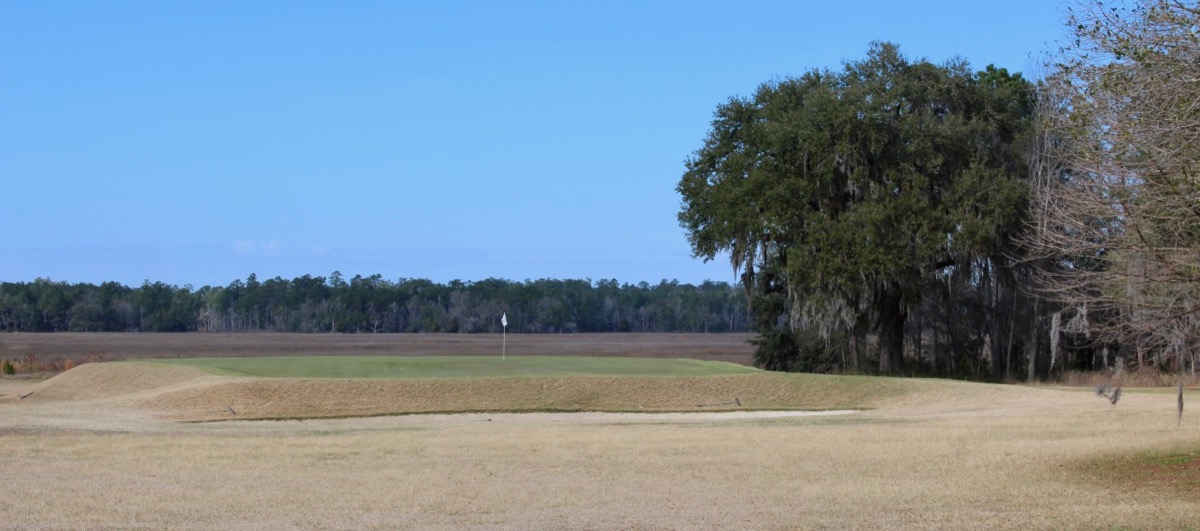 Yeamans Hall Club- hole 3
Yeamans Hall Club- hole 3
Seth Raynor was an engineer by trade.
The father of American golf, C.B. MacDonald, drafted Raynor to assist with construction of some of his early courses starting with The National Golf Links.
Seth was a quick learner and ended up designing and building a whole raft of courses (168) himself, including Fishers Island, Mid Ocean Club, Mountain Lake, and Shoreacres....
That's not a bad C.V!
In 1923 Seth Raynor was invited to design and construct Yeamans Hall just outside Charleston in South Carolina.
At the same time the club employed noted landscape architect Frederick Olmsted (of Central Park fame) to design the landscape for the 1000 acre Yeamans Hall project - and noted architect James Gamble Rogers (Yale) to design and oversee the construction of the clubhouse, accommodation and other buildings...
The depression years held up the development of Yeamans Hall, preserving the timeless quality of the original development through the years.
What we experience in the modern day is basically the same as was experienced back in 1925 when the course opened!
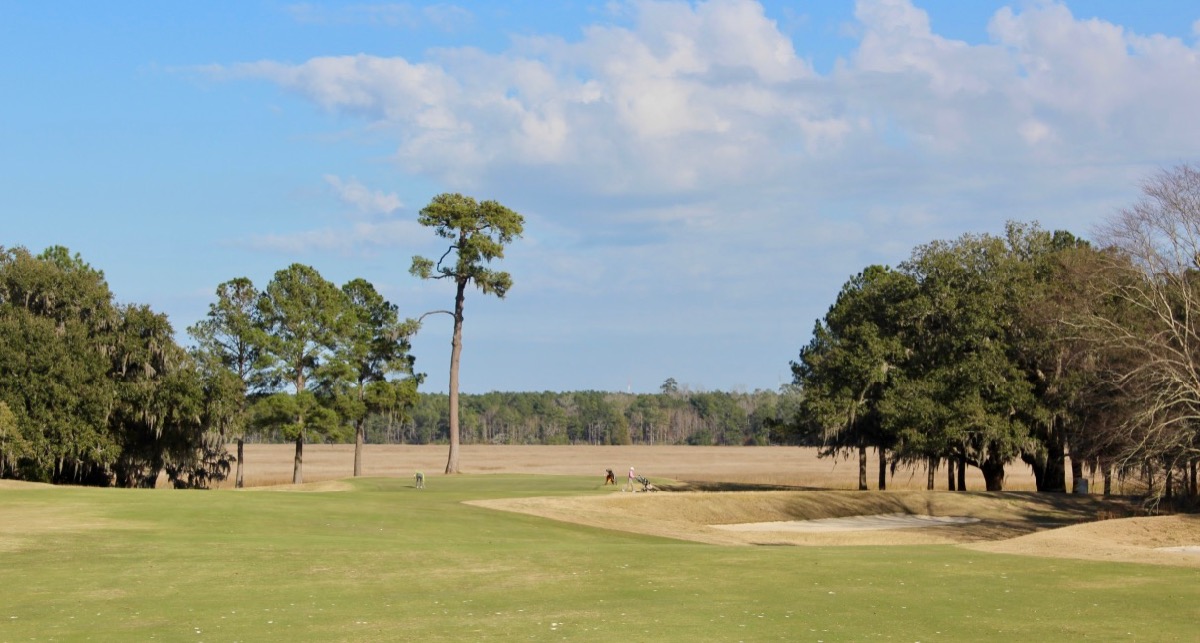 Yeamans Hall Club- hole 8
Yeamans Hall Club- hole 8
But, back to the golf- Seth Raynor's golf course is a joy to play!
As you would expect when playing a MacDonald/Raynor course, the famous links holes from the UK are used as 'templates' for a wonderful array of holes including Redan, Eden, Alps, Short, Long, Biarrritz and others..
Raynor, Olmstead & Rogers knew what they were doing and the resultant experience is enhanced by the wonderful southern hospitality that Yeamans Hall provides.
The ambience of the course is very much dictated by the collection of Live Oaks and Magnolia trees that Olmstead used to frame holes and add colour and structure to the routing.
But it is Raynor's wonderful course that takes centre stage.
Based on flat sandy terrain, each hole demands your attention with a variety of strategic decisions as you negotiate your way around the course.
The bunkering is well positioned but very basic , and plain visually- although some are remarkably deep.
Greens are often square in shape, and large but certainly less wild and rolling than modern greens.
But don't underestimate them! - these big greens usually have a knob or valley in play which can play havoc with the putting!
Maintenance is a little less intense here than many modern courses, but there were no complaints from us - the course was well presented.
Notable holes include:
- the par 4 first hole (Plateau), a nice gentle opener with a lovely plateau green
- the par 3 third hole (Short), probably my favourite hole, with marsh in the background and a fun green (see pic top of page)
- the par 3 sixth hole (Redan), can you hit a draw?
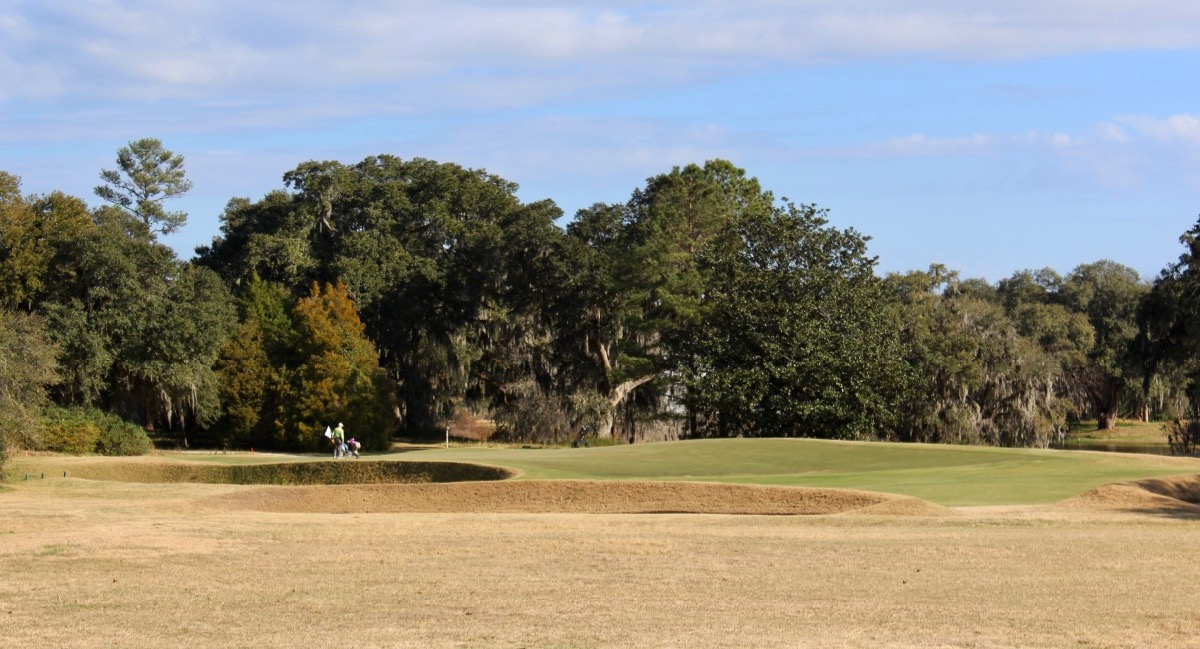 Yeamans Hall Club- hole 6
Yeamans Hall Club- hole 6
- the par 4 eighth hole (Creek), I love the approach with marsh backdrop (see pic mid page)
- the par 5 ninth hole (Long), an attractive hole with water to carry of the tee
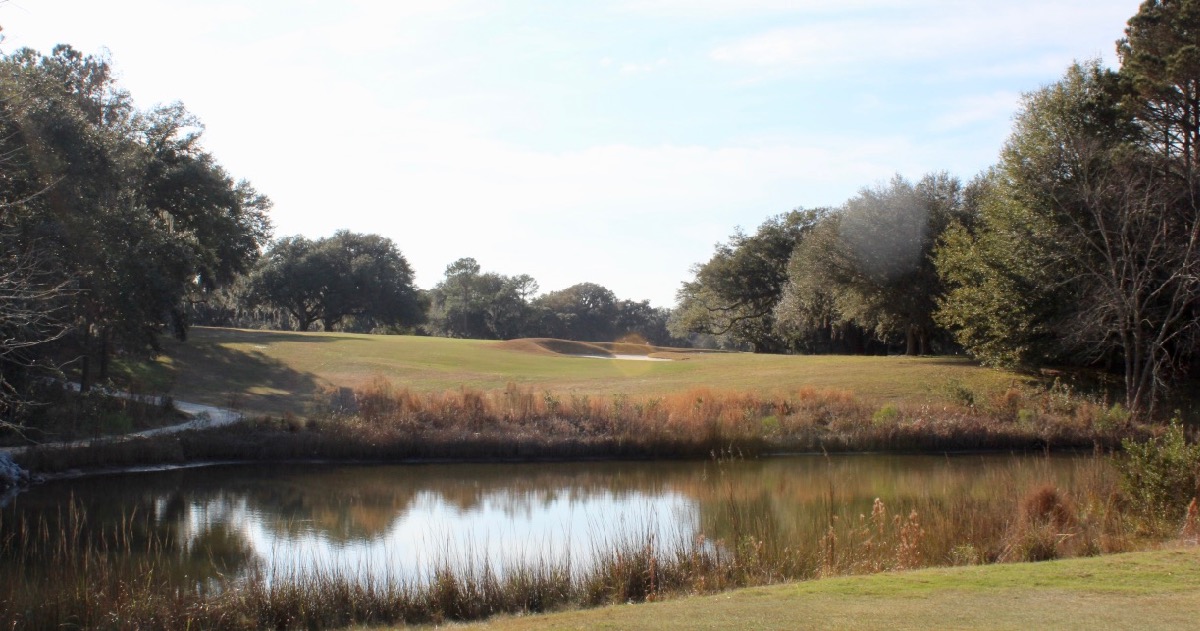 Yeamans Hall Club- hole 9
Yeamans Hall Club- hole 9
- the par thirteenth hole (Eden), modelled on St Andrew of course, but with additional bunkers short
- the par 4 fourteenth hole (Knoll), is a longer par 4 that plays over two valleys with deep bunkering intimidating the golfer
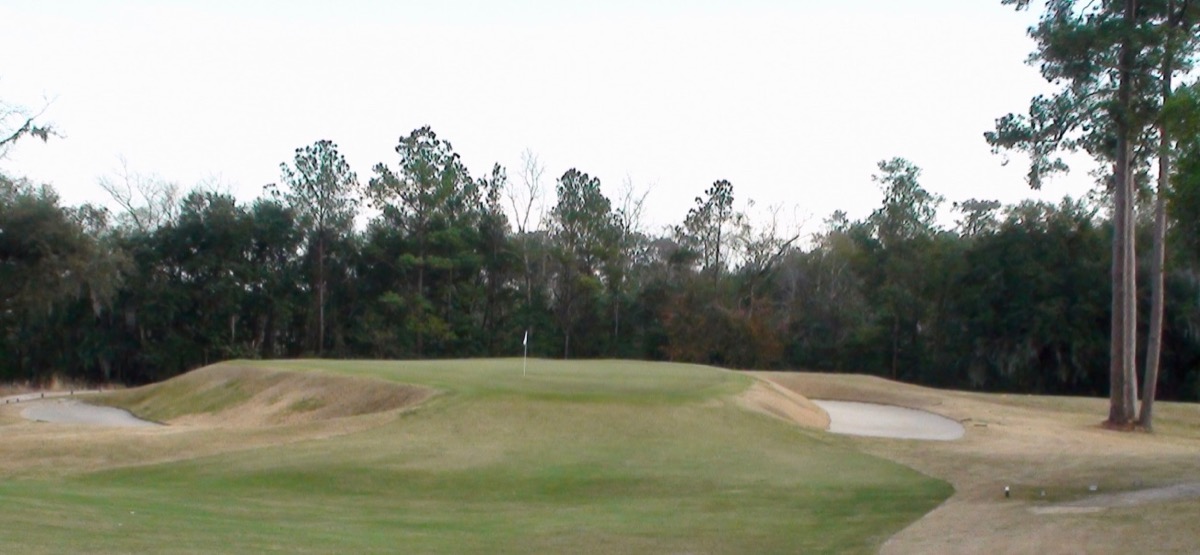 Yeamans Hall Club- hole 14
Yeamans Hall Club- hole 14
In 1997 Tom Doak with Jim Urbina was invited to renovate the greens and did so very much in keeping with the understated style of the original design.
I thought the greens were wonderful!
And Tom Doak also suggested the club clean out the trees serving as a backdrop to the par 3 third hole, to give clear viewing of the magnificent vista we see today across the marshland.
A masterstroke!
This is a course I could play every day.
A real gem
Golf Tours
The Travelling Golfer offers golf tours to the USA
We can tailor a trip to suit your group.
For suggested itineraries see: Destinations: USA
Enquiries
Please enquire here:

